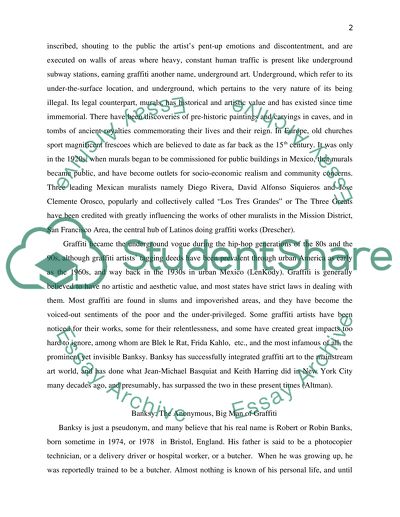Cite this document
(“Graffiti Art, Mural Art and Banksy Essay Example | Topics and Well Written Essays - 3750 words”, n.d.)
Retrieved from https://studentshare.org/visual-arts-film-studies/1434619-graffiti-art-mural-art
Retrieved from https://studentshare.org/visual-arts-film-studies/1434619-graffiti-art-mural-art
(Graffiti Art, Mural Art and Banksy Essay Example | Topics and Well Written Essays - 3750 Words)
https://studentshare.org/visual-arts-film-studies/1434619-graffiti-art-mural-art.
https://studentshare.org/visual-arts-film-studies/1434619-graffiti-art-mural-art.
“Graffiti Art, Mural Art and Banksy Essay Example | Topics and Well Written Essays - 3750 Words”, n.d. https://studentshare.org/visual-arts-film-studies/1434619-graffiti-art-mural-art.


